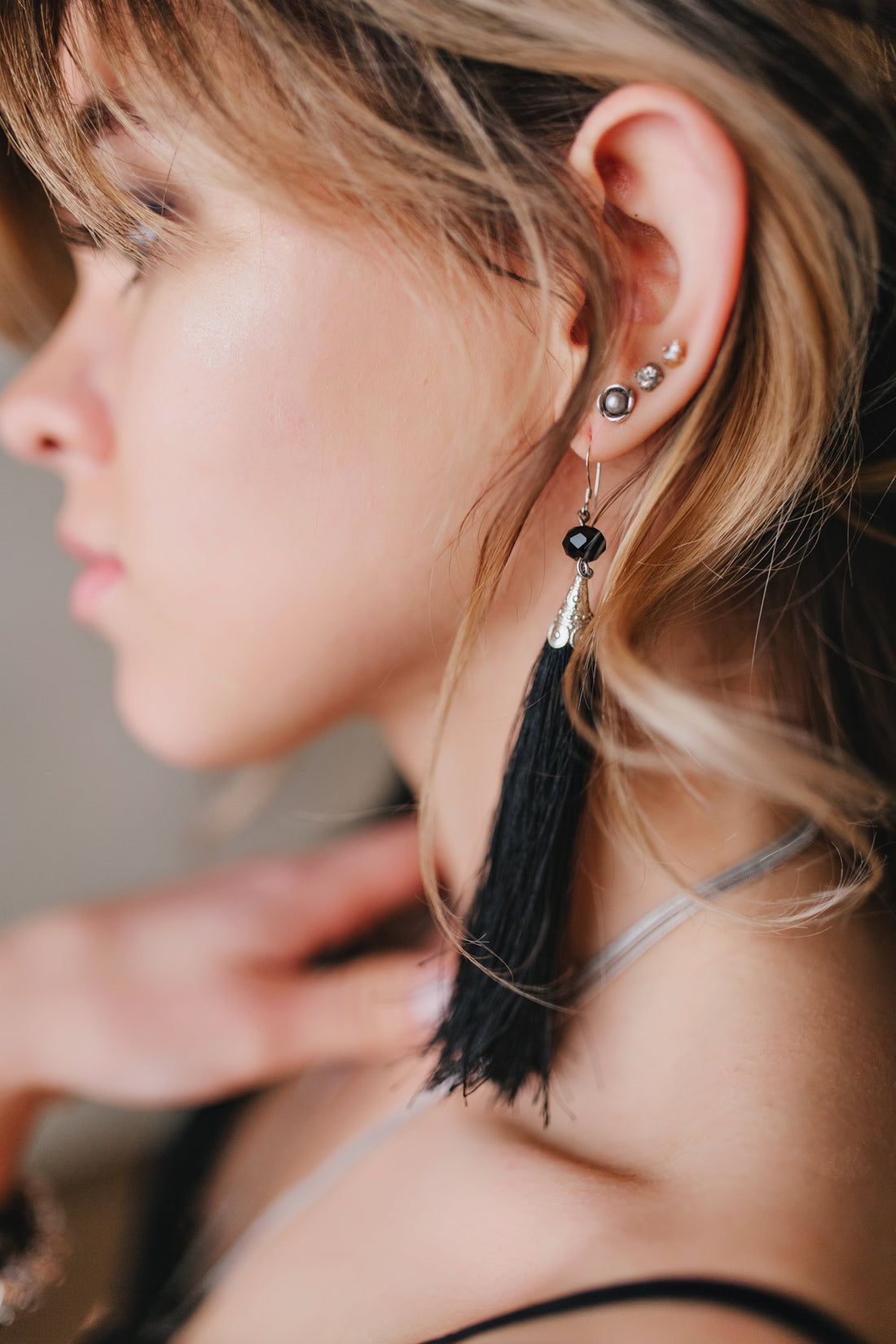
How Long Does It Take for Ear Piercings to Heal? Full Timeline & Aftercare Guide
Share
Ear piercing healing time refers to the period your body needs to safely recover from a new piercing, allowing the skin and tissue to fully close around the jewelry without irritation, swelling, or infection. While ear piercings are among the most popular and accessible body modifications, they still require time, care, and patience to heal properly—especially if you want to avoid complications or premature jewelry removal.
Healing time varies depending on the type and location of the piercing. A standard earlobe piercing may heal in as little as 6 to 8 weeks, while upper lobe, cartilage, or full ear piercings like helix and conch can take several months. The healing process is influenced by factors such as aftercare routine, jewelry material, sleep position, and how your immune system responds.
Whether you’ve just got your ears pierced or you're considering adding more to your ear stack, understanding the healing timeline helps you plan for safe jewelry changes, avoid unnecessary irritation, and spot early signs of infection. With proper post-piercing care, gentle cleaning, and a little patience, your new earrings can heal beautifully.
How Long Do Ear Piercings Take to Heal?
Healing time for ear piercings can vary widely depending on where the piercing is located, your aftercare routine, and how your body reacts. While some areas of the ear, like the lobe, heal relatively quickly, others—particularly cartilage—require more time and caution.
The following chart outlines general healing timelines for common ear piercings:
|
Piercing Type |
Typical Healing Time |
Notes |
|
Earlobe Piercing |
6–8 weeks |
Fastest to heal; minimal tissue density |
|
Upper Lobe Piercing |
8–12 weeks |
Slightly longer than standard lobe due to proximity to cartilage |
|
Helix Piercing |
3–6 months |
Common cartilage piercing; pressure-sensitive |
|
Forward Helix |
4–6 months |
Similar healing to standard helix, slightly more complex due to location |
|
Conch Piercing |
6–9 months |
Inner ear cartilage, prone to swelling if slept on |
|
Tragus Piercing |
3–6 months |
Small but dense cartilage; healing depends on jewelry and handling |
|
Industrial Piercing |
6–12 months |
Two cartilage piercings connected by one barbell; needs strict aftercare |
|
Full Ear/Multiple Piercings |
Varies (3–12 months) |
Overlapping healing times; risk of irritation increases with volume |
How to Clean New Ear Piercings Properly
Proper cleaning is one of the most important parts of piercing aftercare. It prevents infection, reduces healing time, and helps maintain the health of your piercing site. Whether you’ve pierced your lobes or cartilage, following a consistent and gentle cleaning routine is key.
Step 1: Wash your hands thoroughly
Always clean your hands with soap and water before touching your piercing.
Step 2: Clean with sterile saline solution
Use a pre-packaged saline spray or mix 1/4 teaspoon of non-iodized sea salt with 1 cup of warm distilled water.
Step 3: Soak or spray the area
- Spray saline directly on the front and back of the piercing
- Or soak a piece of sterile gauze in saline and gently compress the area for 2–3 minutes
Step 4: Let it air dry
Avoid using tissue or cotton balls, which can leave fibers behind. Allow the area to dry naturally or use clean paper towel.
Step 5: Do not twist or rotate jewelry
Contrary to old advice, twisting can break the healing tissue and delay healing. Just clean around the piercing.
Step 6: Repeat 1–2 times per day
Over-cleaning can irritate the skin. Stick to a gentle routine.
FAQs: Ear Piercing Healing Time & Aftercare
1. How long does it take for ear piercings to heal completely?
Healing time varies by piercing type. Lobe piercings typically heal in 6–8 weeks, while cartilage piercings like helix, conch, or industrial may take 3 to 12 months. Healing depends on your body, aftercare routine, and the jewelry used.
2. When can I change my earrings after getting pierced?
For lobe piercings, you can usually change earrings after 6–8 weeks, as long as there’s no pain, swelling, or discharge. Cartilage piercings require 3–6 months or more. Always wait until your piercing is fully healed before switching jewelry.
3. How do I know if my ear piercing is healed?
A healed piercing will feel comfortable, show no redness or discharge, and the jewelry will move freely without pain. The skin around the piercing should look smooth and closed. If in doubt, consult your piercer before removing or changing earrings.
4. What’s the best way to clean a new ear piercing?
Use sterile saline solution 1–2 times daily. Spray directly or apply with gauze—never cotton. Avoid alcohol or hydrogen peroxide, and don’t twist the jewelry. Clean hands are essential before touching the piercing.
5. Why is my ear still swollen weeks after piercing?
Mild swelling is normal in the first few days, but persistent swelling may signal irritation, trauma (like sleeping on it), or infection. Avoid pressure on the piercing and continue proper aftercare. If symptoms worsen, see a piercer or healthcare provider.
6. Can I sleep without earrings after 6 months?
If your piercing is fully healed (typically after 6+ months for cartilage or 2+ months for lobes), you may sleep without earrings. However, newer piercings can close overnight—especially if irritated—so keep jewelry in until you’re sure it’s stable.
7. How can I make my ear piercing heal faster?
Stick to a gentle, consistent cleaning routine, avoid touching or rotating the jewelry, and use hypoallergenic materials. Avoid sleeping on the piercing, reduce exposure to bacteria (e.g., from phones, hair, or dirty pillowcases), and stay hydrated.
